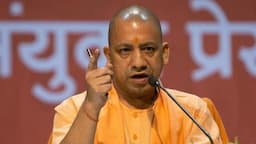The Supreme Court on Thursday asked the Election Commission to explain in detail the steps followed to ensure free and fair polls adding that there has to be sanctity in the electoral process.
"This is (an) electoral process. There has to be sanctity. Let nobody have apprehension that something which is expected is not being done," the bench of Justice Sanjiv Khanna and Justice Dipankar Datta said.

Advocate Nizam Pasha who is appearing for one of the petitioners said a voter should be allowed to take the VVPAT slip after the votes and deposit it in a ballot box.
Justice Khanna asked if such a process won't affect the voter's privacy, to which Pasha replied, “Voter privacy cannot be used to defeat voter's rights.”
ECI while explaining the voting process said the EVM's control unit commands the VVPAT unit to print its paper slip. This slip is visible to the voter for seven seconds before it falls into a sealed box. The machines are checked before polling in the presence of engineers.
The Election Commission told the court that all voting machines pass through the mock poll process.
"Candidates are allowed to pick up randomly 5 per cent machines. The process is repeated on poll day. VVPAT slips are taken out, counted and matched. All machines have different kind of paper seals. At the time when a machine arrives for counting, seal number can be checked," an official said.
The court also asked Election Commission if it is possible for a voter to get a slip after voting. The election body replied that this would compromise the secrecy of the vote and may be misused outside the booth.
"How it can be used by others we cannot say," it said. The court further raised question on why it takes more time for counting VVPAT paper slips and if machines can be used for this to which the election body said the paper is thin and sticky and is not actually meant for counting.
The bench also asked the ECI to look into an allegation that during a mock poll in Kerala, extra votes were recorded in favour of the BJP in the Electronic Voting Machines (EVMs).
The direction came when a report regarding the EVM issue was brought to the court’s attention during the hearing of the EVM-VVPAT case.
Advocate Prashant Bhushan, appearing for the Association for Democratic Reforms, cited a report published by Manorama Online about the complaints raised regarding the mock polls conducted on the EVMs in the Kasargod constituency in Kerala.
As per the report, both the Left Democratic Front (LDF) and the United Democratic Front (UDF) gave complaints to the District Collector that at least four electronic voting machines (EVM) erroneously registered extra votes in favour of the BJP.
ECI official, however, told the Supreme Court that the news report cited is "totally false" and undertook to file a detailed report.
The court on April 18 is hearing petitions seeking cross-verification of votes cast on Electronic Voting Machines (EVM) with paper slips generated through the VVPAT system.
Bhushan has said the light on the VVPAT machine should remain on at all times which currently stays on for seven seconds.
“One possible solution is if they can't change glass at this stage, at least the light should remain on at all times, so I can see the slip cutting and falling. No privacy will be compromised.”
Senior Advocate Sanjay Hegde, also appearing for petitioners, said there should be a separate audit to add greater credibility to the counting process.
When the court asked how a voter can check if his/her vote has been cast, the official replied that the poll body gives demonstrations and runs awareness programmes for this.
The Election Commission also said that voting machines get allocated to constituencies randomly. “No spurious unit can be connected (to them). They will only recognise sister units.”

The Election Commission's counsel said the petitioners' request for a return to ballot paper voting system is a "retrograde suggestion".
Voter Verified Paper Audit Trail (VVPAT) enables a voter to see if the vote was cast properly and went to the candidate, he/she supports. The VVPAT generates a paper slip that is kept in a sealed cover and can be opened if there is a dispute.
Currently, VVPAT slips of five randomly selected EVMs in every Assembly segment are verified. Amid the Opposition's questions and apprehensions regarding the EVM system of voting, the petitions call for cross-verification of every vote.



.jpg&w=3840&q=75)






.webp&w=256&q=75)




